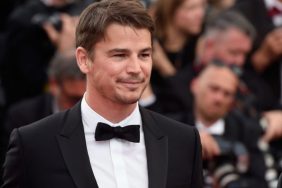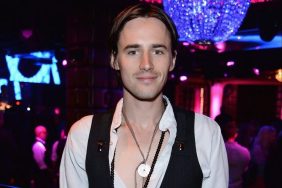The life and work of the iconic Australian actor Heath Ledger is celebrated in an exclusive new exhibition, Heath Ledger: A Life In Pictures, at the Art Gallery Of Western Australia.
Ledger, a Perth boy, had many facets. Launching his career in Australian television, he found fame early as a teen idol, playing bad boy Scott Irwin in the soap Home And Away. A restless Ledger moved to Los Angeles in the late ’90s – emerging as a prodigious actor, despite having minimal formal training. He showed comic charm in the Shakespeare-riffing rom-com 10 Things I Hate About You. However, Ledger attracted the greatest acclaim for his dramatic roles. He earned a first Academy Award nomination for his portrayal of the quiet ranch hand Ennis Del Mar in Ang Lee’s poetic, queer Western, Brokeback Mountain. Inevitably, Ledger was compared to James Dean. Yet, even as a Hollywood star, he continued to appear in Australian productions like Ned Kelly and the gritty Candy. A gifted photographer, Ledger harboured ambitions to expand into film-making himself. He picked up new skills by directing music videos.
On 22 January 2008, Ledger died at the age of 28 in New York – devastating the entertainment world. He would win successive posthumous awards for his mercurial depiction of The Joker in Christopher Nolan’s The Dark Knight – including, most notably, an Oscar for Best Supporting Actor (a triumph, too, for the oft-maligned superhero genre). Ledger’s final film was 2009’s The Imaginarium Of Doctor Parnassus, from the auteur Terry Gilliam.
Nearly a decade since Ledger passed, interest in his legacy has only grown. (Indeed, Batman fans still cosplay as The Joker at pop culture conventions.) Arranged by the Western Australian Museum, Heath Ledger: A Life In Pictures assembles precious pieces of film history. The public can view Ledger’s Joker suit from The Dark Knight and the shirts worn by Brokeback Mountain’s ill-fated lovers Ennis Del Mar and Jack Twist (Jake Gyllenhaal). Four of Ledger’s awards are displayed – among them his Oscar statuette. But there is also the opportunity to glimpse Ledger’s research journals, allowing a rare insight into his methodology as an actor. Crave Online caught up with curator Dr Allison Holland to talk about an Aussie screen legend.
Crave Online: Heath Ledger has assumed iconic Hollywood status in recent years – there is a huge public interest in, and love for, him globally. This year also saw the release of the documentary I Am Heath Ledger. What do you think his legacy is? And what is it that fascinates people about Heath?
Dr Allison Holland: I believe people’s affection and fascination for Heath comes from an appreciation of his grassroots approach to life. Even after he became famous, and [was] living on location across the globe, he was constantly in touch with his family, childhood and film industry friends. This helped him to stay grounded. He was very generous and, in the early days in Hollywood, kept an open house for Australians travelling to LA. He was also very supportive of emerging actors who were on set with him. This spirit lives on in the Australian’s In Film Heath Ledger Scholarship for emerging Australian actors in Hollywood.
CO: What was your own interest in Heath when you started curating this exhibition?
AH: I first became interested in Heath’s career in 2002, while I was curating an exhibition at the State Library Of Victoria called Kelly Culture: Reconstructing Ned Kelly. At the time, Gregor Jordan’s Ned Kelly was in production in Melbourne and there were some opportunities for the two projects to connect. Then, in 2011, I was asked by the Western Australian Museum to research Heath’s personal archive with a view to curating an exhibition.
CO: What kind of goals, and even challenges, did you face in approaching Heath Ledger: A Life In Pictures?
AH: Over the last six years, this project has offered me amazing opportunities to meet people from around the world and to appreciate the complexities of film production. Trying to meet expectations of movie buffs who visit the exhibition was a challenge. To represent Heath’s key roles, I searched for key costumes in production houses in London, LA and Rome. It has been a special experience for me as a curator to commemorate Heath’s skill as an actor and enthusiastic approach to directing. Knowing there are so many people in Perth who had connections to Heath, I felt a great responsibility in sensitively presenting Heath’s early life and career.
CO: Obviously, you liaised with Heath’s family in curating the exhibition. What kind of suggestions did they make – and what kinds of insights did they share? (I was thinking that they may have revealed that Heath enjoyed chess, inspiring the Friday night games!)
AH: From the beginning, the Ledger family have been very supportive of the exhibition. I also reached out to many of Heath’s friends and colleagues. They gave me insights into his acting while on location, as well as his passion for photography and chess.
CO: Heath’s costumes from Brokeback Mountain (as Ennis Del Mar) and The Dark Knight (The Joker) are bound to attract A LOT of attention. But what can you tell us about some of the other mementoes that people should look out for?

AH: The exhibition is quite extensive, with over 250 objects on display, as well as film excerpts and behind-the-scenes footage from Heath’s archive. If you have a favourite film of Heath’s, you will find something that moves you. It could be a handwritten prop letter from [2000’s American Revolution epic] The Patriot or Heath’s chess set, hat and sunglasses. There are also some very beautiful portraits taken by celebrity photographers such as Platon, Rupert Thorpe and Karin Catt.
CO: Intriguingly, some of Heath’s journals are on display. What can you tell us about them?
AH: Heath was often jotting down ideas for film treatments or scripts, or doodling. There are a few of his journals on display – the most significant one was created during the six weeks of pre-production of The Dark Knight. He transcribed his lines and, alongside, pasted images of macabre clowns or The Joker cut out from vintage and contemporary comic books. It is a beautiful little exercise book and, because only one opening can be on display, there is also a digital version so visitors can look through other pages.
CO: It’s significant that this exhibition is being held in Western Australia. To what extent do you feel Heath was a product of his home state – and how did it shape his outlook?
AH: Heath is definitely a product of his community in Perth and the environment. Growing up in the hills and surfing at Leighton Beach [in North Fremantle] nurtured Heath’s physicality, his passion for sports and risk-taking. On location, Heath did many of his own stunts and became an expert with swords, guns and horses. There is one scene in [2002’s historical drama] The Four Feathers where Heath falls off his horse in a battle and then vaults onto another as it gallops past. He did it in one take and his agility and courage are very impressive.
CO: Heath starred in two high-profile Australian films – Ned Kelly and Candy. How are these represented in Heath Ledger: A Life In Pictures?
AH: Ned Kelly was an important role for Heath. He took his representation of this national icon very seriously. Fortunately, I located significant costumes, armour and props from the film in private and public collections. Also on display is the original Jerilderie Letter that Ned Kelly dictated to Joe Byrne in 1879. Because Candy was a film set in contemporary urban Sydney, it was more difficult to locate objects. [But] there is Candy’s wedding dress [as worn by co-star Abbie Cornish] and excerpts from Diary Of A Milkman, a documentary on the film’s production made by the writer Luke Davies.

CO: What do you think will most surprise people about Heath when they see the exhibition?
AH: Heath was part of a collective in LA called The Masses. They were a group of talented filmmakers and musicians who worked together, and separately, on independent film projects. Heath directed several music videos – and these are screened in the last room of the exhibition. Heath was also keen to direct two feature films: one on a young female chess master [The Queen’s Gambit] and the other on the 1970s musician Nick Drake. There are journals, storyboards and scripts on display that show Heath’s creative ideas for these projects.
CO: Not many people know that Heath shot music videos – including two for his old friend, the influential Australian rapper N’fa Jones.
AH: The music videos Heath directed are also quite eclectic. He was responding to the music and experimenting with different visions or approaches. He did two videos for N’fa Jones – one [‘Seduction Is Evil (She’s Hot)’] had a cast and crew in line with a bigger film production. The other [‘Cause An Effect’] was a more streamlined production, filmed in his garage at Bronte [Sydney] with just a few close friends – not that you can tell. While in LA, he did a very moving video for Ben Harper [‘Morning Yearning’] with classical musicians and contemporary dancers. The most extraordinary is a black and white video Heath created for a Nick Drake song [‘Black Eyed Dog’]. He filmed and produced it entirely on his own in London over three days. He was really happy with how it turned out.
CO: A fun final question: Do you have a personal favourite Heath role or film?
AH: Heath had such diverse roles, so I don’t have one favourite film. It depends on whether I want to lose myself in a period romantic comedy, like Casanova, or the fantasy of Terry Gilliam’s Imaginarium Of Dr Parnassus. Having looked at each of Heath’s roles under a microscope, I can appreciate how he was consistently developing his acting and director’s eye. He was learning from the best in the film industry.
–
‘Heath Ledger: A Life in Pictures’ runs at the Art Gallery of Western Australia until 29 January 2018. It is free to the public. Head here for more information.






